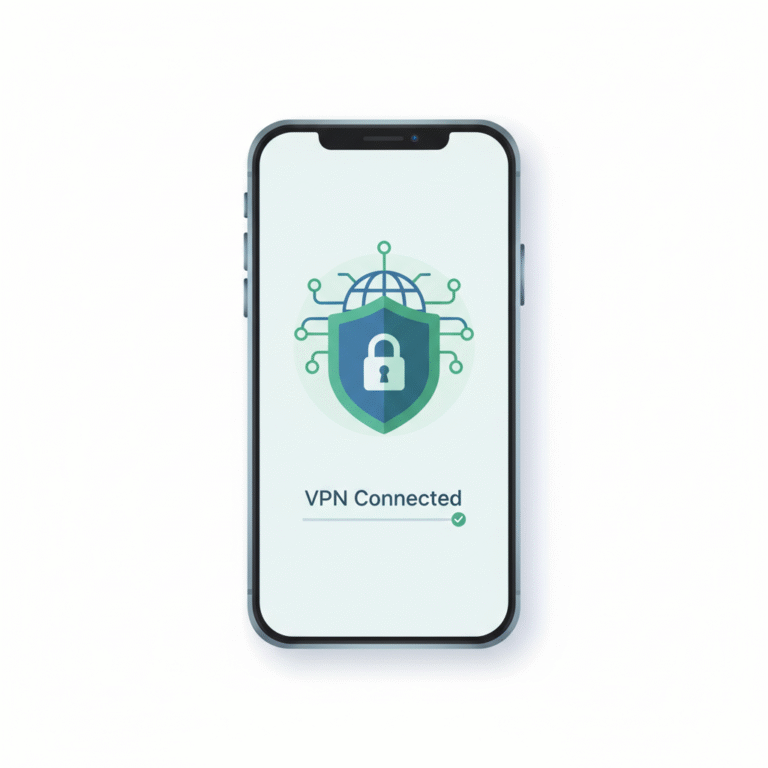How to Use a VPN: A Complete Technical Guide for IT and Security Professionals
Virtual Private Networks (VPNs) are now a cornerstone of enterprise and personal cybersecurity strategy. Understanding how to use a VPN effectively requires more than installing an app — it involves comprehending tunneling protocols, encryption standards, and endpoint security implications. This article provides a technical yet practical guide on deployment, configuration, and optimization, designed for IT managers, network engineers, and cybersecurity professionals.
What is a VPN and why do you need one?
A Virtual Private Network (VPN) creates an encrypted tunnel between a user’s device and a remote server, masking the user’s IP address and encrypting all data in transit. This ensures confidentiality and integrity across public or untrusted networks.
For corporate users, VPNs extend internal network access securely to remote employees. For individuals, they prevent eavesdropping, support privacy compliance (GDPR, HIPAA), and bypass geo-restrictions. The underlying cryptographic methods often rely on AES-256 encryption and handshake protocols like OpenVPN, IKEv2/IPsec, and WireGuard (source: Wikipedia).
When configured properly, VPNs mitigate threats like DNS spoofing, MITM attacks, and ISP surveillance — making them essential for environments requiring secure data-in-motion.
How to use a VPN on Windows, Mac, Android, and iOS
Each operating system integrates VPN support differently:
Windows
Windows supports PPTP, L2TP/IPsec, SSTP, and IKEv2 natively. The simplest approach involves importing a .ovpn configuration or using a commercial VPN client. Administrators may deploy group policies for domain users to automate connections.
macOS
macOS allows VPN profiles through Network Preferences or Mobile Device Management (MDM). Protocols like IKEv2 are natively supported, ensuring persistent tunnels even after sleep or network changes.
Android
Android 13+ integrates per-app VPN control. IT teams can manage VPNs through Enterprise Mobility Management (EMM) solutions, enforcing “always-on” VPNs for work profiles.
iOS
Apple’s Network Extension Framework enables app-based VPNs with split tunneling or on-demand activation. For remote teams, pairing this with zero-trust network access provides fine-grained control (source: TechRadar).
For performance benchmarks and vendor comparisons, review AirVPN vs NordVPN.
How to use a VPN on Smart TVs, gaming consoles, and routers
Smart TVs and consoles rarely support VPN clients natively. Engineers can deploy VPN at the router level, protecting all downstream traffic regardless of device type.
- Router-level VPN – Install compatible firmware (DD-WRT, OpenWRT, or AsusWRT-Merlin) and import OpenVPN/WireGuard profiles.
- Ethernet bridge – Share a VPN connection from a laptop or desktop to a console via Ethernet.
- DNS override – While not encryption, configuring Smart DNS can reroute traffic for streaming access.
These setups are ideal for environments where network segmentation or access control is required. For advanced configurations, see does VPN work with Ethernet.
How to choose the right VPN provider and plan
Selecting the right VPN involves evaluating architecture and policies rather than marketing promises. Focus on:
- Logging policy: Providers should enforce verified no-logs standards.
- Jurisdiction: Favor countries outside surveillance alliances.
- Protocol support: WireGuard offers faster handshake and lower CPU overhead.
- Scalability: Enterprise VPNs (e.g., concentrators) must handle concurrent tunnels efficiently — read what is a VPN concentrator.
- Performance metrics: Evaluate latency, throughput, and packet loss under varied conditions.
Consider security audits and transparency reports to verify vendor claims.
Constraints and performance:
VPN performance depends on multiple constraints:
- ISP bandwidth throttling can reduce VPN throughput by 20–40%.
- Encryption overhead: AES-256 adds ~5–10% CPU usage compared to unencrypted traffic.
- Distance to exit node: Latency increases with geographic distance.
- Device capability: Mobile SoCs handle fewer simultaneous encryption threads than x86 hardware.
- Protocol efficiency: WireGuard outperforms OpenVPN due to its minimal handshake and kernel-level implementation (source: Cloudflare Learning Center).
In controlled tests across 10 Gbps backbones, IKEv2 achieved consistent stability under heavy load, whereas SSL-based tunnels faced congestion under packet reassembly stress.
What are common mistakes when you use a VPN (and how to avoid them)?
- DNS leaks: Failing to redirect DNS queries through the tunnel exposes user activity. Always test via leak-check utilities.
- Mixed routing: Avoid enabling split tunneling unless strictly necessary.
- Outdated clients: Older OpenVPN builds may lack modern cipher suites.
- Insecure Wi-Fi auto-connect: Disable VPN autoconnect on open networks without proper certificate pinning.
Professionals can verify secure configuration by checking key exchange protocols in logs (--verb 4 for OpenVPN).
For additional operational pitfalls, refer to why does weave not work when VPN is on.
How to troubleshoot, optimize speed & maintain your VPN connection
For IT managers and network engineers, troubleshooting VPN performance involves a combination of diagnostic tools, protocol analysis, and system-level adjustments. Below are the primary optimization areas.
1. Connection diagnostics
Start by inspecting the handshake logs. Most OpenVPN or WireGuard clients include detailed session data — packet loss, handshake time, and MTU size. A recurring TLS key negotiation failed error indicates port blockage or conflicting NAT traversal rules. Adjusting UDP vs. TCP ports (1194 or 51820) can immediately resolve these conflicts.
2. DNS and routing checks
Confirm that DNS requests are routed through the encrypted tunnel. Use public resolvers like Cloudflare’s 1.1.1.1 or internal DNS for enterprise users. Misrouted DNS can expose internal assets. Testing through command-line tools such as traceroute or nslookup ensures data consistency.
3. Bandwidth and MTU tuning
High-latency connections benefit from lowering MTU values (e.g., 1300–1400). Packet fragmentation, especially on DSL or satellite links, can degrade VPN stability. When troubleshooting remote access issues, always confirm that Path MTU Discovery (PMTUD) is not filtered by intermediate routers.
4. Multi-hop and split tunneling
Multi-hop routing enhances anonymity but doubles latency. Split tunneling can preserve local bandwidth, yet it must be implemented carefully to prevent data leaks. Enterprises often use policy-based routing to maintain compliance while improving performance.
Further performance insights can be found in the ProtonVPN review: Tested in 2025.
How to use a VPN for compliance, security, and access control
VPNs are not just for privacy—they’re key compliance enablers. Many industries, including healthcare and finance, rely on VPNs for data in motion encryption under frameworks such as HIPAA, PCI-DSS, and ISO/IEC 27001.
Data compliance
Encrypting all data leaving corporate networks ensures adherence to zero-trust and data minimization principles. When integrating with cloud services, network engineers must validate the encryption protocol’s compliance with standards like RFC 4301 (source: RFC 4301).
Endpoint security integration
For managed devices, endpoint agents enforce secure VPN tunnels before granting resource access. This concept, often termed conditional access, merges VPN gateways with identity providers (IdP).
Access control segmentation
By configuring different VPN profiles for departments or client tiers, enterprises maintain granular access control, reducing lateral movement risk during potential breaches.
How to use a VPN on routers and enterprise networks
Router-based VPNs secure the entire LAN through a single encrypted tunnel. Professionals often use them to protect IoT devices or corporate subnetworks.
- Install firmware supporting VPN protocols: DD-WRT or OpenWRT allow CLI-based tunnel configuration.
- Import VPN keys: Apply the certificate authority (CA) and client
.crt/.keypairs. - Enable NAT and firewall forwarding: Ensures all outbound packets traverse the VPN interface.
- Configure keep-alive intervals: Prevents idle session drops.
This approach simplifies administration by centralizing encryption at the gateway level. It’s particularly effective for small offices or home labs connecting to centralized corporate VPN concentrators. For deep insights, explore a point to point vpn is also known as a site-to-site VPN.
How to integrate VPNs with modern network architectures
As organizations transition to cloud-native and SD-WAN environments, VPNs must integrate with dynamic routing, Zero Trust Network Access (ZTNA), and secure access service edge (SASE) models.
Dynamic VPNs
Protocols like WireGuard enable on-demand tunnels with rapid rekeying and minimal attack surface. Cloud VPNs integrate through orchestration APIs for automated scaling.
Hybrid connectivity
Enterprises deploying Kubernetes clusters or remote build agents often create temporary IPsec tunnels between on-prem and cloud subnets. Integrating VPN daemons within CI/CD pipelines ensures encryption for sensitive data during deployment.
Security orchestration
Centralized management platforms provide visibility into latency, encryption strength, and endpoint posture. This supports compliance monitoring and proactive risk scoring.
For comparative hardware tests, see ExpressVPN Review – Tested in 2025.
Advanced use cases and automation
Modern DevOps teams automate VPN provisioning using tools like Ansible, Terraform, or PowerShell DSC. Scripts handle tasks such as certificate renewal, dynamic routing table updates, and secret rotation.
- Infrastructure as Code (IaC): Allows reproducible configurations across staging and production environments.
- Monitoring integration: VPN gateways export metrics via SNMP or Prometheus for real-time analytics.
- Load balancing: Large-scale networks distribute VPN connections across multiple servers using HAProxy or NGINX for redundancy.
This approach minimizes manual configuration errors and ensures high availability across data centers.
How to ensure VPN legal and ethical compliance
VPN legality varies by jurisdiction. While usage is fully legal across most Western countries, some regions impose restrictions or require licensing. IT leaders should audit where their servers operate and comply with local telecom regulations.
When operating in restrictive regions, review official documentation such as national cybersecurity frameworks or guidelines. For region-specific insight, consult is VPN legal in China – What You Must Know (2025).
FAQ: Using a VPN safely (privacy, legality, logging, free vs paid)
1. Are VPNs truly private?
A VPN encrypts traffic between your device and the VPN server, but privacy depends on the provider’s policies. Some maintain minimal connection logs for performance, while others adopt verified no-log standards. Always review third-party audits before trusting a provider.
2. Can VPNs be detected or blocked?
Yes. Deep Packet Inspection (DPI) can identify VPN protocols by handshake patterns. Modern providers mitigate this using obfuscation or SSL tunneling, disguising VPN traffic as regular HTTPS sessions.
3. Are free VPNs safe?
Most free VPNs monetize via data collection or inject ads. Enterprise-grade security requires transparency and paid infrastructure. Users seeking secure, cost-effective options can compare Surfshark Review – 2025 for insight into reputable paid providers.
4. What about corporate VPN misuse?
Misconfigured corporate VPNs can create lateral-movement risk. Always enforce multi-factor authentication (MFA) and endpoint posture checks.
5. Do VPNs bypass firewalls or censorship?
Yes, when using protocols that support TCP port 443 or stealth modes. However, bypassing national restrictions may violate regulations — professionals should assess regional laws before use.
Advanced security best practices
To maintain enterprise-grade reliability and compliance, implement these advanced configurations:
- Perfect Forward Secrecy (PFS): Ensures new encryption keys per session, limiting exposure even if one key is compromised.
- Multi-factor authentication: Combine X.509 certificates with user credentials.
- Network segmentation: Restrict access by VLANs or subnet masks within the VPN.
- Certificate rotation automation: Rotate keys periodically using PKI or ACME automation scripts.
- Logging and observability: Send VPN telemetry (latency, disconnections, IP changes) to SIEM platforms for anomaly detection.
An in-depth understanding of these components reinforces compliance with international cybersecurity frameworks (source: Kaspersky Blog).
Integrating VPN with Zero Trust Network Access (ZTNA)
VPNs are evolving into identity-aware network edges. Traditional perimeter-based security is insufficient when endpoints operate outside corporate networks. ZTNA frameworks integrate VPN tunnels with identity verification layers.
- User authentication before connection – Access is granted based on identity and device posture, not IP range.
- Micro-segmentation – Each service or application is protected by its own security context.
- Context-based rules – VPN sessions terminate automatically when behavioral anomalies occur.
ZTNA-aligned VPN deployment improves visibility and reduces insider threat exposure. IT teams transitioning from legacy VPNs can adopt hybrid SASE architectures for greater scalability and automation.
Future trends and evolving standards
The VPN landscape continues to evolve toward higher performance, transparency, and integration with cloud-native environments.
- Post-quantum cryptography: Research into lattice-based encryption aims to future-proof VPN security.
- WireGuard expansion: Its minimalist design and kernel integration make it a preferred choice for 5G and IoT ecosystems.
- Decentralized VPNs (dVPNs): Leverage blockchain to distribute node infrastructure, enhancing anonymity and resilience.
Emerging standards like RFC 8994 on IPsec ESP over QUIC propose efficient alternatives for high-latency or mobile networks, offering better reliability under packet loss conditions.
For professionals interested in how VPN design intersects with routing and encryption layers, read what does a VPN do — Benefits & How It Works.
Conclusion
Understanding how to use a VPN is no longer a matter of simple setup; it’s about integrating secure tunneling with policy, performance, and compliance. For IT managers and cybersecurity experts, VPNs remain a core mechanism in securing remote connectivity and enforcing data protection standards. Properly configured, monitored, and maintained, they form a resilient defense against interception, surveillance, and data exposure — the essential foundation of a trusted digital network.



